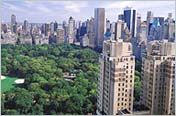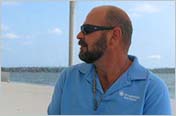|
|
 |
|
|
|
|
Shankar’s East Meets West CD Cover
|
|
| ........................................................................................... |
|
On November 8, two new albums were released by East Meets West Music, part of their series Nine Decades, documenting the work of Ravi Shankar. Volume II, “Reminiscence of North Vista,” was originally recorded at a concert at the house in Hollywood, California, that Shankar had rented when his notoriety went from cognoscenti to the known music-listening world. He rented a house in the Hollywood neighborhood known as North Vista and the week after he appeared at Woodstock, with Alla Rakha on tabla, they essentially gave a concert, one of many in the backyard over time, for family and friends complete with cricket noises and laughter. Both pieces are evening ragas, and each is in a different mode, or thaat, with different cycles as well. The first, “Kaunsi Kanada,” has a very smooth thoughtful beginning that ségués throughout the piece, cycling between a contemplative air through to a more energetic phase, that sounds like a conversation, almost with oneself. Then it returns to an almost Southern rock or dulcimer-flavored thrumming energy to a whirling finish. Was a decision made? Was action taken? The second raga, “Bihag,” is in a different thaat or mode, and the approach to the mode is as important as the notes themselves. There are as many—or more!—rules as there are to writing a sonnet. The character of the second piece is completely different–the energy becomes more vibrant much earlier in the piece and, to me, sounds like it would be a great traveling song to put on the player when you’re training or driving to the next Holiday fête. It’s easy to imagine a sultry backyard with the crickets chirping, eyes closed, and the vibrant strokes on the tabla mixed with sounds that seem to be coming from many more instruments, with the overtones and sparkling tintinnabulation of the higher strings, while the ostinato of the lower strings thrums, permitting Shankar’s virtuosity to come to the fore. The first section uses the Ada Chautal, of 14 beats on the tabla, and then a different rhythm, of 8 ½ beats, changes the character in the second part. Both sound very exotic. The recording has captured an evening that Shankar considers to be very special and the when you hear it, you’ll agree.
The second release is Volume III of Nine Decades, “Orchestral Experimentations.” Shankar was working in both North Indian and South Indian systems of composition, as well as beginning his integration of East and West, using some Western styles. The modality has a very distinctive feel that, at first, seems East Asian entirely, as most Westerners are more accustomed to hearing the pentatonic scale and associating it with Peking Opera or some Japanese styles. The first track, “Gorakh 6 ½,” has a driving beat, but beginning with “Spring,” which is based on “Raga Vasant,” there is more of the sound associated with India. The cycle is “Adi Tala,” so while it is an 8 beat cycle, the pattern is 4-2-2. The nine tracks on this album have more of a Western song form, and are played by some of the finest musicians working in India at that time, part of the National Orchestra. Shankar’s pallet in the early to mid ’50s—1950 through 1954—had a greater tonal and textural range than he had previously been able to access and the joy of immediate creation and implementation colors these recordings. Rather than through-composed ragas, Shankar enjoyed improvising. This often leads to the recording of his contributions while they were mere hours old. Fresh and energetic, these short orchestral pieces vary in mood, from the anguish of a heart in torment at a lost love, through an evocation of morning, from awakening through the start of the business of the day, that is as onomatopoetic and progressive as “Handel in the Strand.”
Together these two releases represent very different aspects of a multi-faceted composer, who is at the heart of Indian music, and has influenced generations of Western musicians. Cosmopolitan and steeped in traditions of North and South India, these works from two very different parts of Shankar’s life are a treat for any music lover on your list. Put the world in their hands.
For more information, visit www.eastmeetswestmusic.com. Shankar’s East Meets West: Ravi Shankar–New Releases from East Meets West
by Sherri Rase
On November 8, two new albums were released by East Meets West Music, part of their series Nine Decades, documenting the work of Ravi Shankar. Volume II, “Reminiscence of North Vista,” was originally recorded at a concert at the house in Hollywood, California, that Shankar had rented when his notoriety went from cognoscenti to the known music-listening world. He rented a house in the Hollywood neighborhood known as North Vista and the week after he appeared at Woodstock, with Alla Rakha on tabla, they essentially gave a concert, one of many in the backyard over time, for family and friends complete with cricket noises and laughter. Both pieces are evening ragas, and each is in a different mode, or thaat, with different cycles as well. The first, “Kaunsi Kanada,” has a very smooth thoughtful beginning that ségués throughout the piece, cycling between a contemplative air through to a more energetic phase, that sounds like a conversation, almost with oneself. Then it returns to an almost Southern rock or dulcimer-flavored thrumming energy to a whirling finish. Was a decision made? Was action taken? The second raga, “Bihag,” is in a different thaat or mode, and the approach to the mode is as important as the notes themselves. There are as many—or more!—rules as there are to writing a sonnet. The character of the second piece is completely different–the energy becomes more vibrant much earlier in the piece and, to me, sounds like it would be a great traveling song to put on the player when you’re training or driving to the next Holiday fête. It’s easy to imagine a sultry backyard with the crickets chirping, eyes closed, and the vibrant strokes on the tabla mixed with sounds that seem to be coming from many more instruments, with the overtones and sparkling tintinnabulation of the higher strings, while the ostinato of the lower strings thrums, permitting Shankar’s virtuosity to come to the fore. The first section uses the Ada Chautal, of 14 beats on the tabla, and then a different rhythm, of 8 ½ beats, changes the character in the second part. Both sound very exotic. The recording has captured an evening that Shankar considers to be very special and the when you hear it, you’ll agree.
The second release is Volume III of Nine Decades, “Orchestral Experimentations.” Shankar was working in both North Indian and South Indian systems of composition, as well as beginning his integration of East and West, using some Western styles. The modality has a very distinctive feel that, at first, seems East Asian entirely, as most Westerners are more accustomed to hearing the pentatonic scale and associating it with Peking Opera or some Japanese styles. The first track, “Gorakh 6 ½,” has a driving beat, but beginning with “Spring,” which is based on “Raga Vasant,” there is more of the sound associated with India. The cycle is “Adi Tala,” so while it is an 8 beat cycle, the pattern is 4-2-2. The nine tracks on this album have more of a Western song form, and are played by some of the finest musicians working in India at that time, part of the National Orchestra. Shankar’s pallet in the early to mid ’50s—1950 through 1954—had a greater tonal and textural range than he had previously been able to access and the joy of immediate creation and implementation colors these recordings. Rather than through-composed ragas, Shankar enjoyed improvising. This often leads to the recording of his contributions while they were mere hours old. Fresh and energetic, these short orchestral pieces vary in mood, from the anguish of a heart in torment at a lost love, through an evocation of morning, from awakening through the start of the business of the day, that is as onomatopoetic and progressive as “Handel in the Strand.”
Together these two releases represent very different aspects of a multi-faceted composer, who is at the heart of Indian music, and has influenced generations of Western musicians. Cosmopolitan and steeped in traditions of North and South India, these works from two very different parts of Shankar’s life are a treat for any music lover on your list. Put the world in their hands.
For more information, visit www.eastmeetswestmusic.com.














